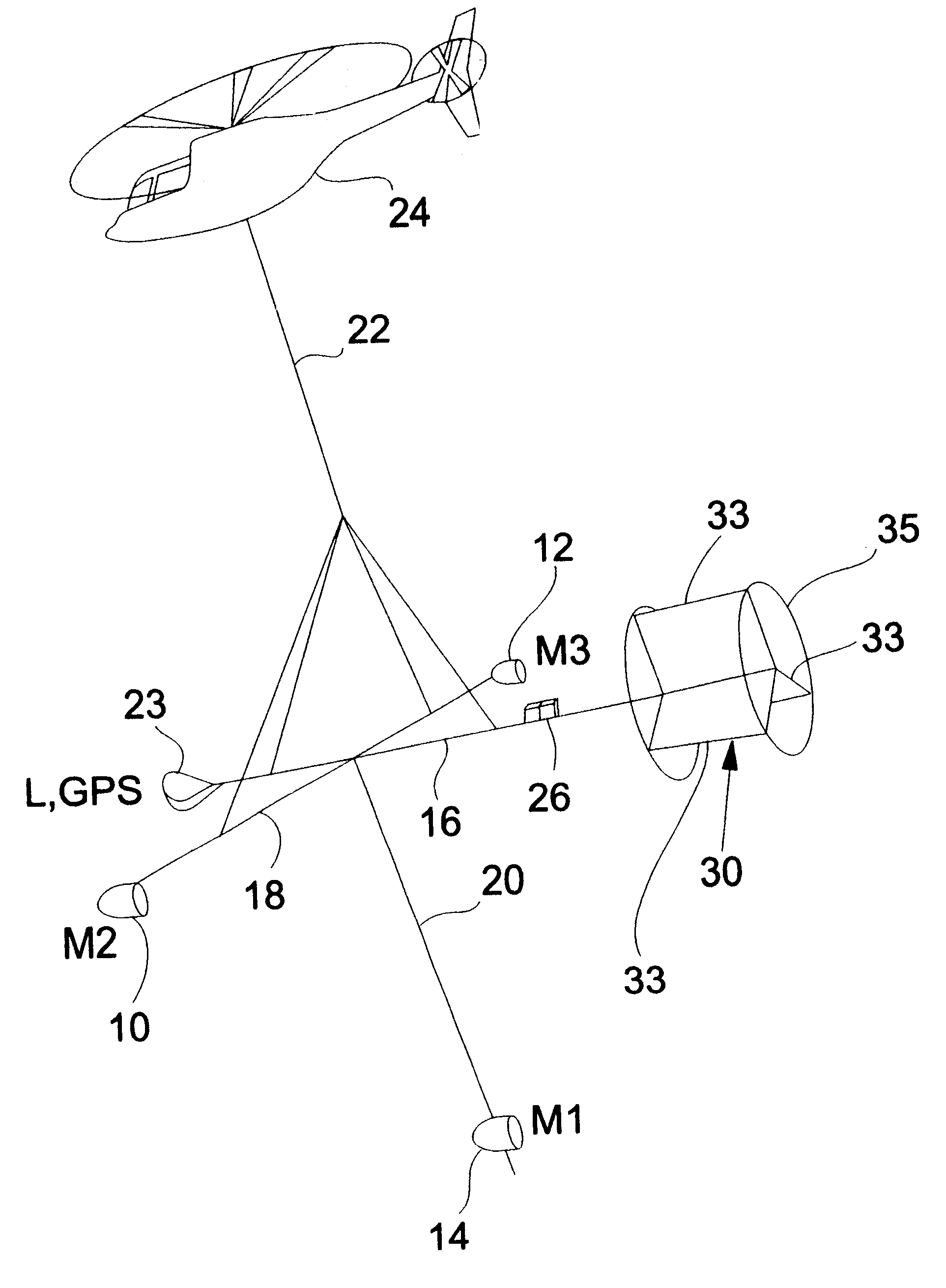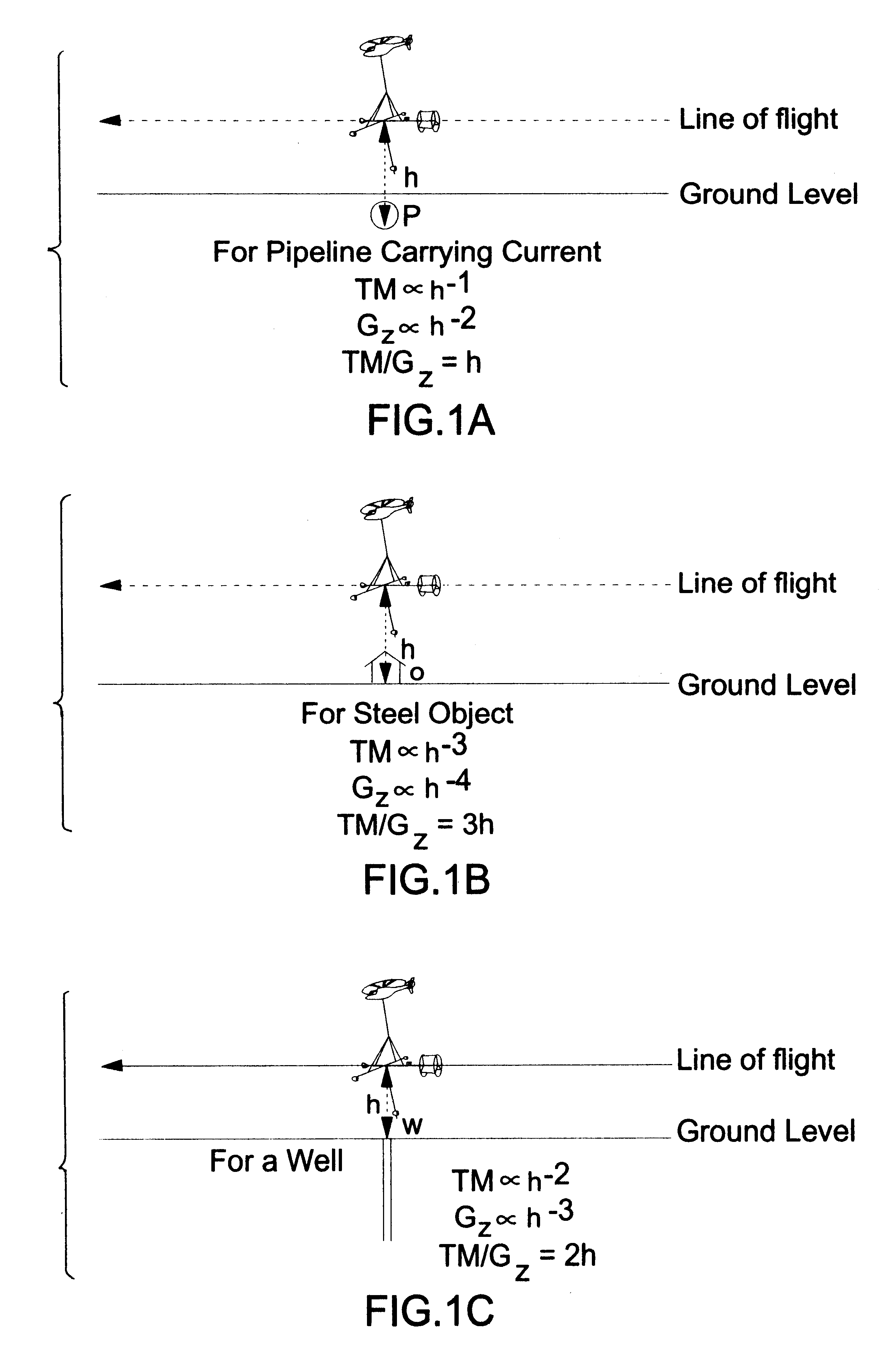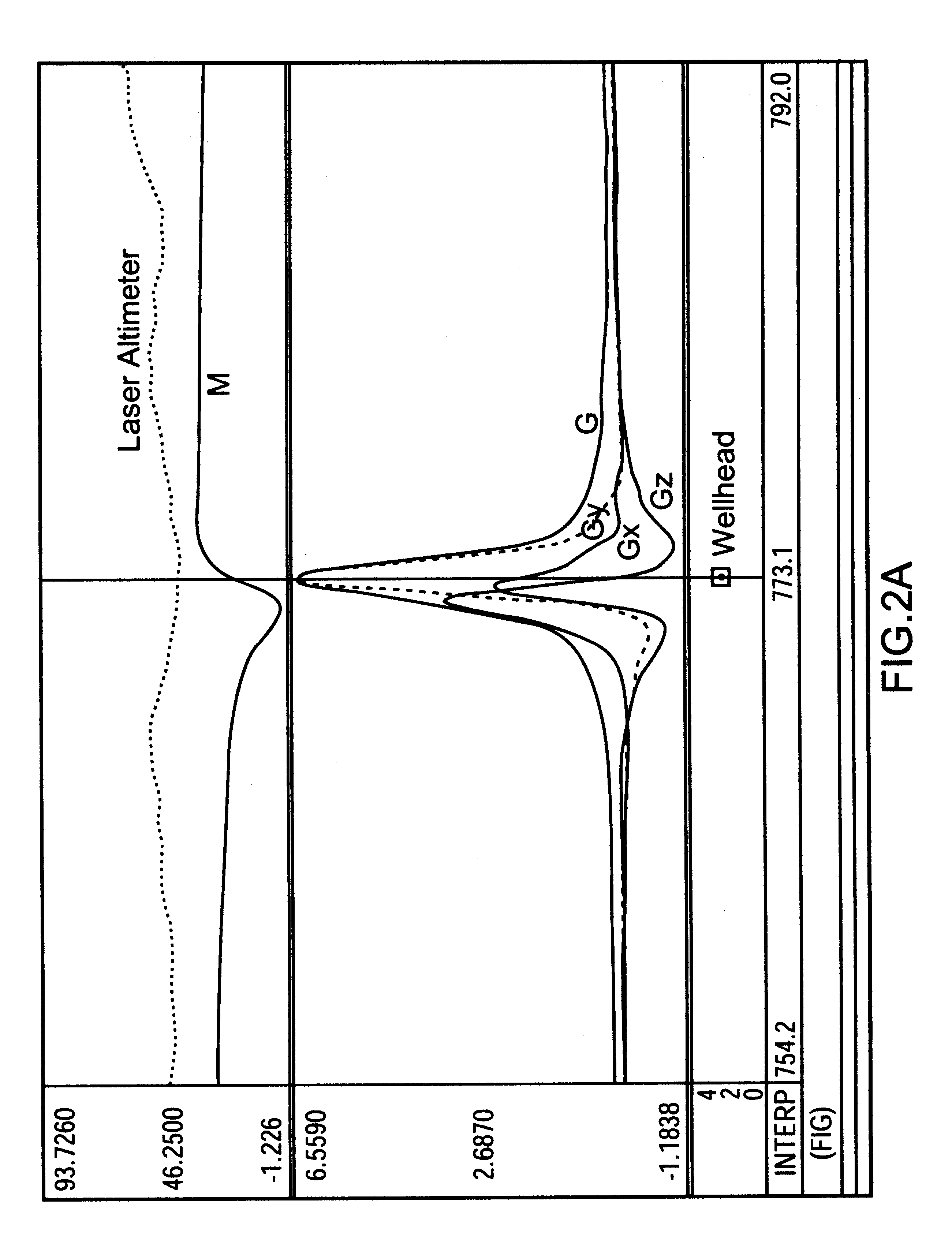Method and apparatus for detecting, locating and resolving buried pipelines, cased wells and other ferrous objects
- Summary
- Abstract
- Description
- Claims
- Application Information
AI Technical Summary
Benefits of technology
Problems solved by technology
Method used
Image
Examples
Embodiment Construction
In practice it is no easy matter to classify cultural magnetic anomalies into the three important categories listed above, or even to precisely determine their location. Neither the amplitude nor curve form of the various anomalous responses on the Earth's total magnetic field can be relied upon for these purposes, since the effects of remanence magnetization, susceptibility and body shape, etc. are unknown. In addition, such responses rarely conform to those ideally predicted by theory, particularly where there are two sources in close proximity.
However, if these three main types of cultural magnetic source, namely pipelines, steel structures, (building, bridges, etc.) and wellheads, are examined by means of a helicopter-supported or aircraft-supported apparatus such as that shown in FIG. 1, their individual responses can be characterized geometrically, as follows:
1. Pipelines
It may be assumed that pipelines are most likely to be detectable by virtue of the DC currents, usually cat...
PUM
 Login to View More
Login to View More Abstract
Description
Claims
Application Information
 Login to View More
Login to View More - R&D
- Intellectual Property
- Life Sciences
- Materials
- Tech Scout
- Unparalleled Data Quality
- Higher Quality Content
- 60% Fewer Hallucinations
Browse by: Latest US Patents, China's latest patents, Technical Efficacy Thesaurus, Application Domain, Technology Topic, Popular Technical Reports.
© 2025 PatSnap. All rights reserved.Legal|Privacy policy|Modern Slavery Act Transparency Statement|Sitemap|About US| Contact US: help@patsnap.com



